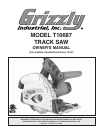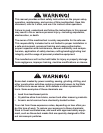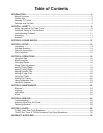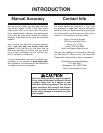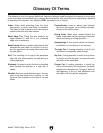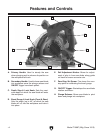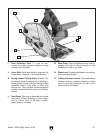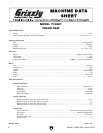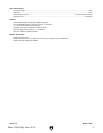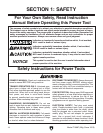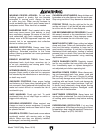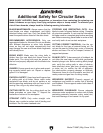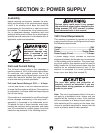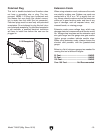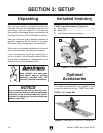
Model T10687 (Mfg. Since 10/12)
-3-
The following is a list of common definitions, terms and phrases used throughout this manual as they relate
to this track saw and woodworking in general. Become familiar with these terms for assembling, adjusting
or operating this machine. Your safety is VERY important to us at Grizzly!
Arbor: Metal shaft extending from the drive
mechanism, to which saw blade is mounted.
The blade is held in place on the arbor using a
special arbor bolt and arbor washer.
Bevel Edge Cut: Tilting the saw blade to an
angle between 0° and 45° to cut a beveled
edge onto a workpiece.
Blade Guard: Metal or plastic safety device that
encases the saw blade. Its function is to pre-
vent the operator from coming into contact with
the saw blade.
Kerf: The resulting cut or gap in the workpiece
after the saw blade passes through during a
cutting operation.
Kickback: An event in which the tool is propelled
back towards the operator at a high rate of
speed.
Parallel: Being an equal distance apart at every
point along two given lines or planes. i.e. the
rip fence face is parallel to the face of the saw
blade.
Perpendicular: Lines or planes that intersect
and form right angles. I.e. the blade is perpen-
dicular to the table surface.
Riving knife: Metal plate located behind the
blade. It maintains the kerf opening in the wood
when performing a cutting operation.
Straightedge: A tool used to check the flatness,
parallelism, or consistency of a surface(s).
Through Cut: A sawing operation in which the
workpiece is completely sawn through.
Rip Cut: Cutting operation in which the rip fence
is used to cut with the grain, or across the wid-
est width of the workpiece.
Plunge Cut: A sawing operation in which the
cut is started above the workpiece; the blade
engages the workpiece by "plunging" down at
the beginning of the cut, and advances once
the blade cuts through the workpiece.
Glossary Of Terms



